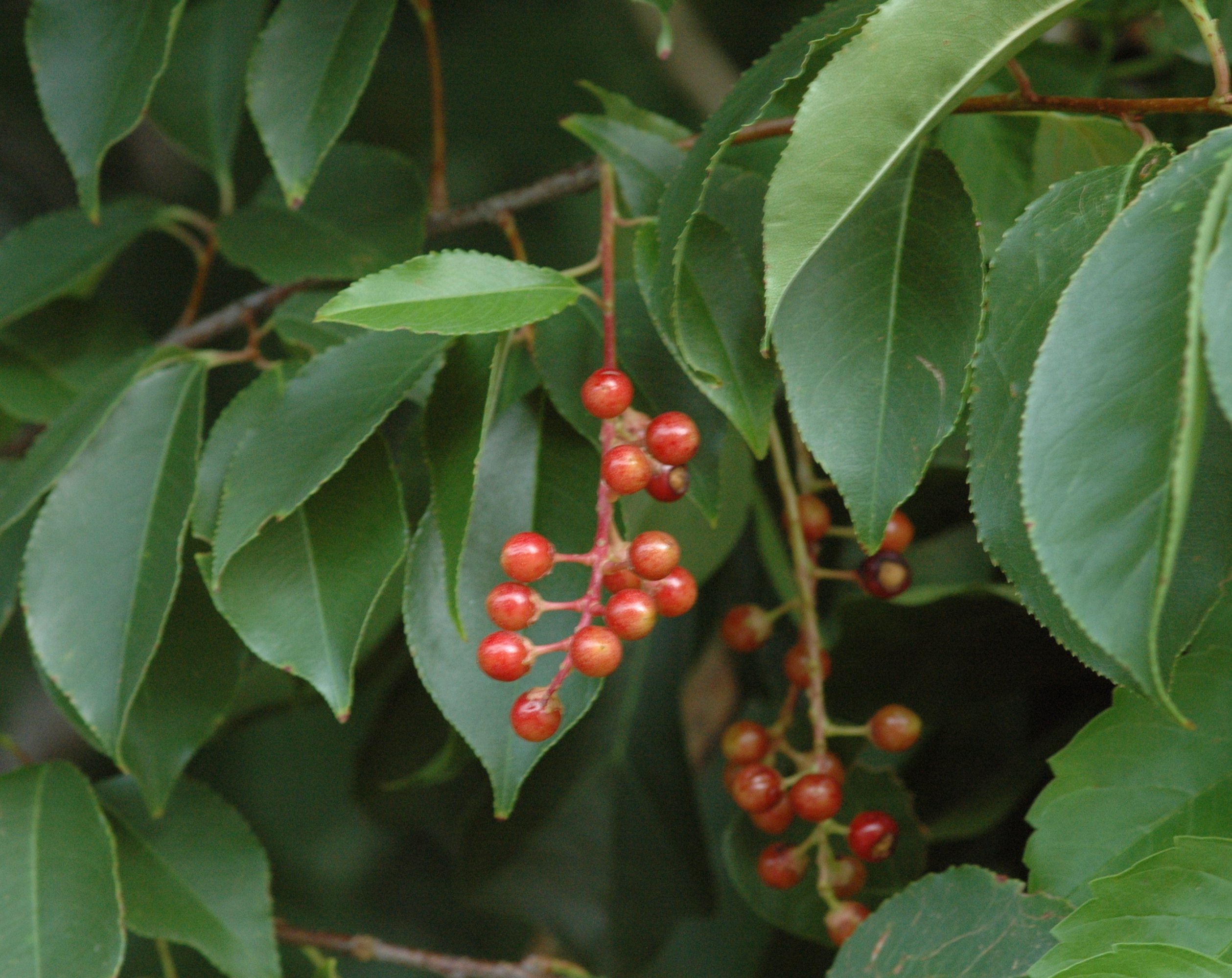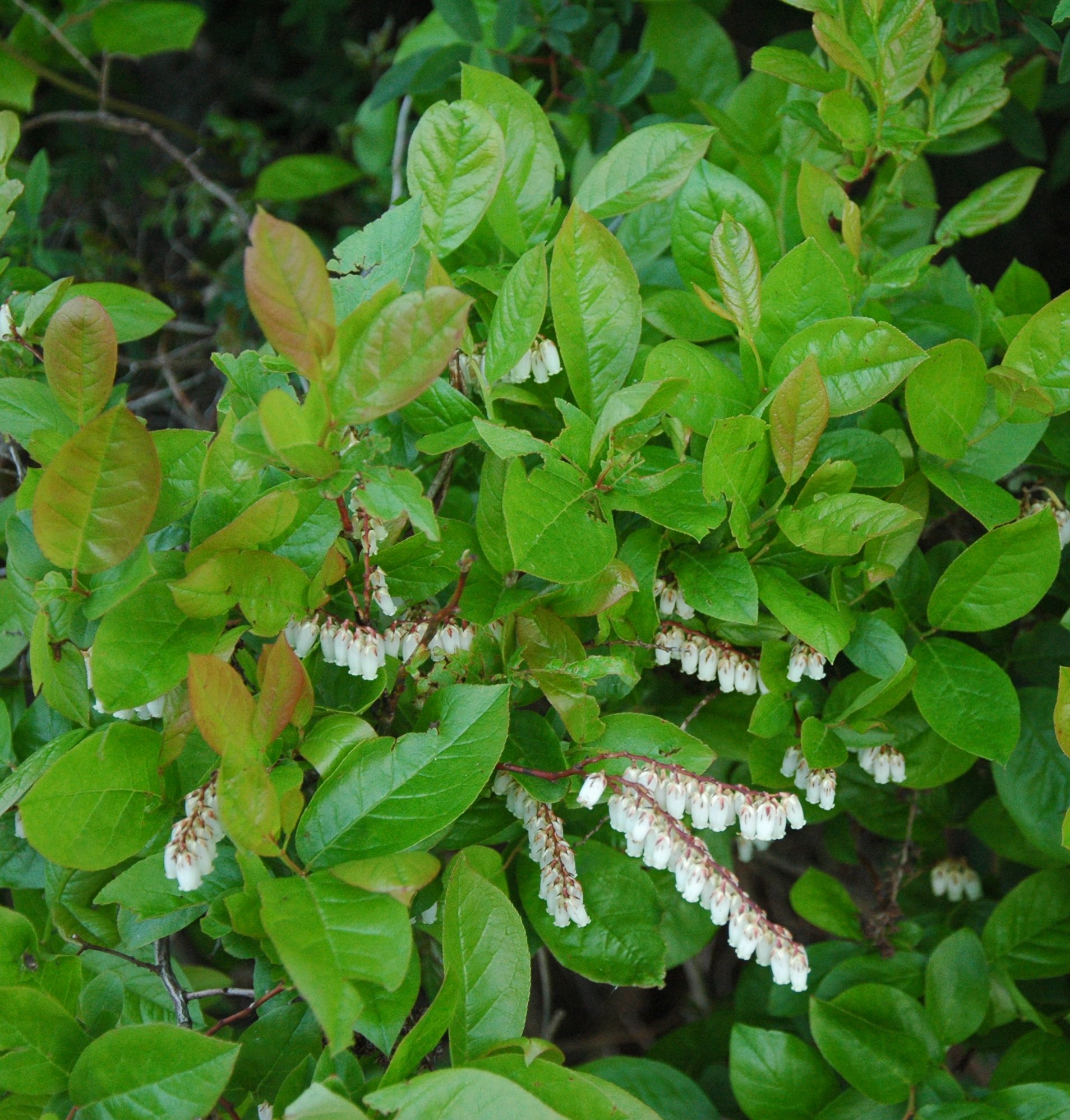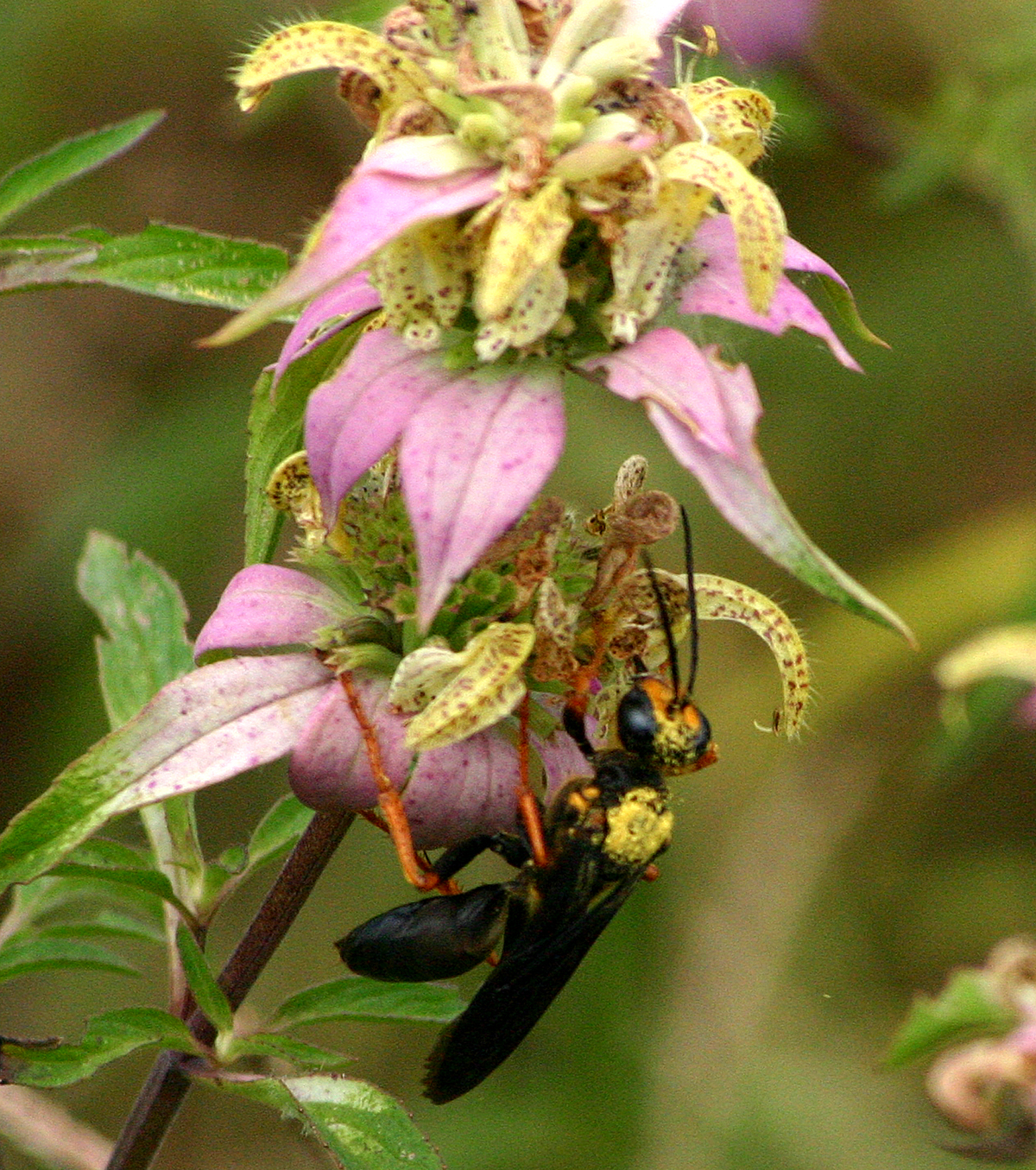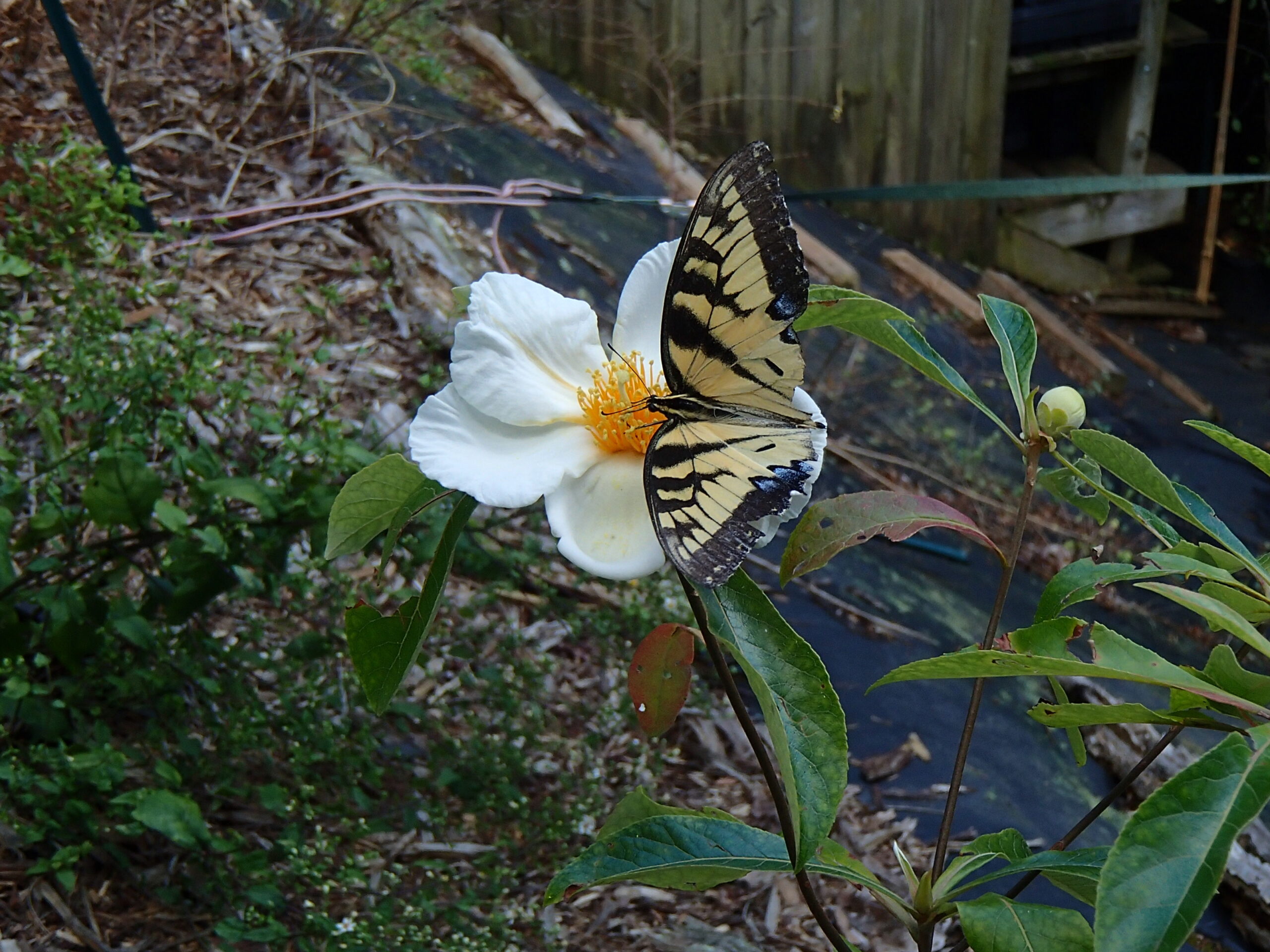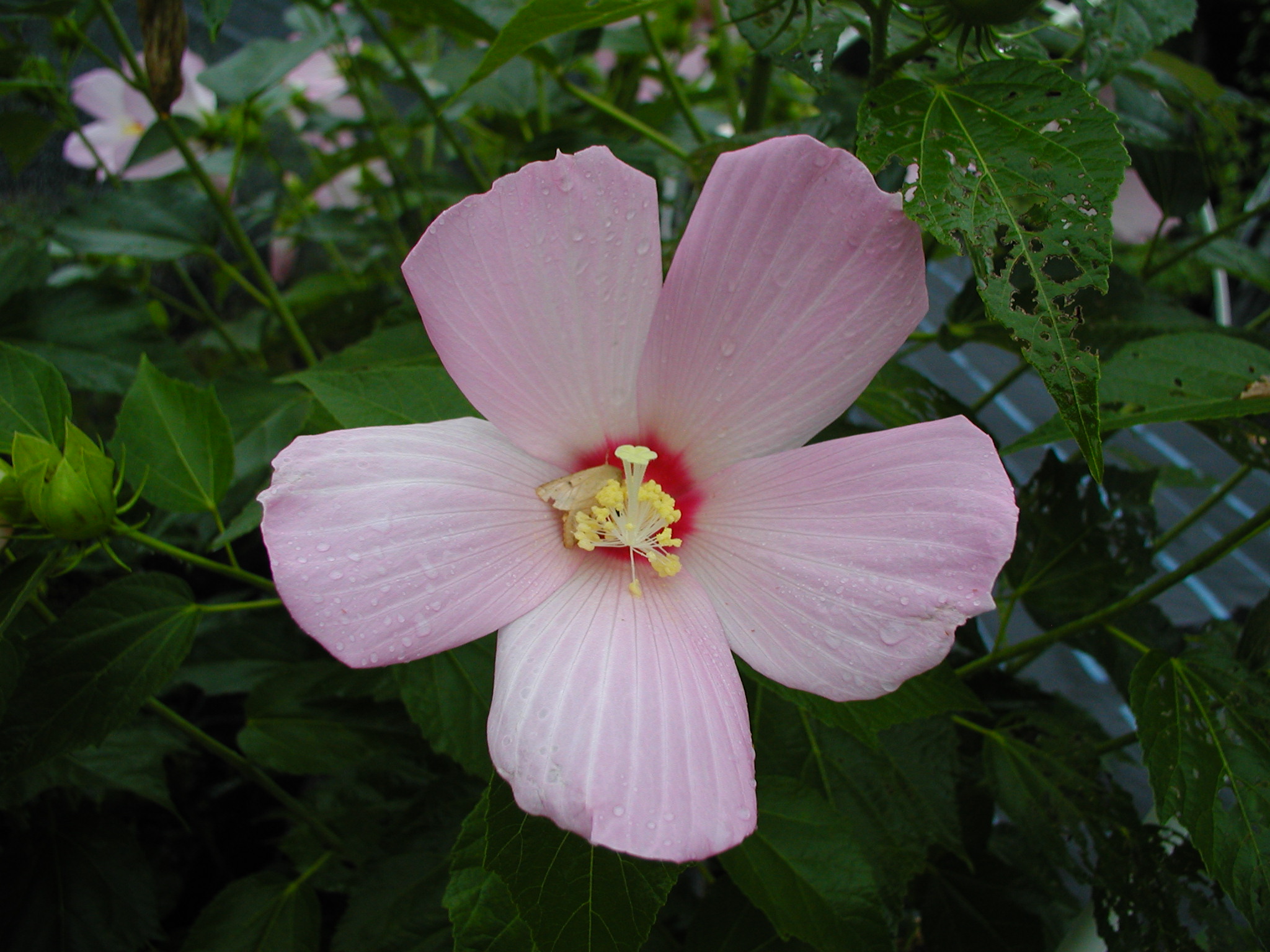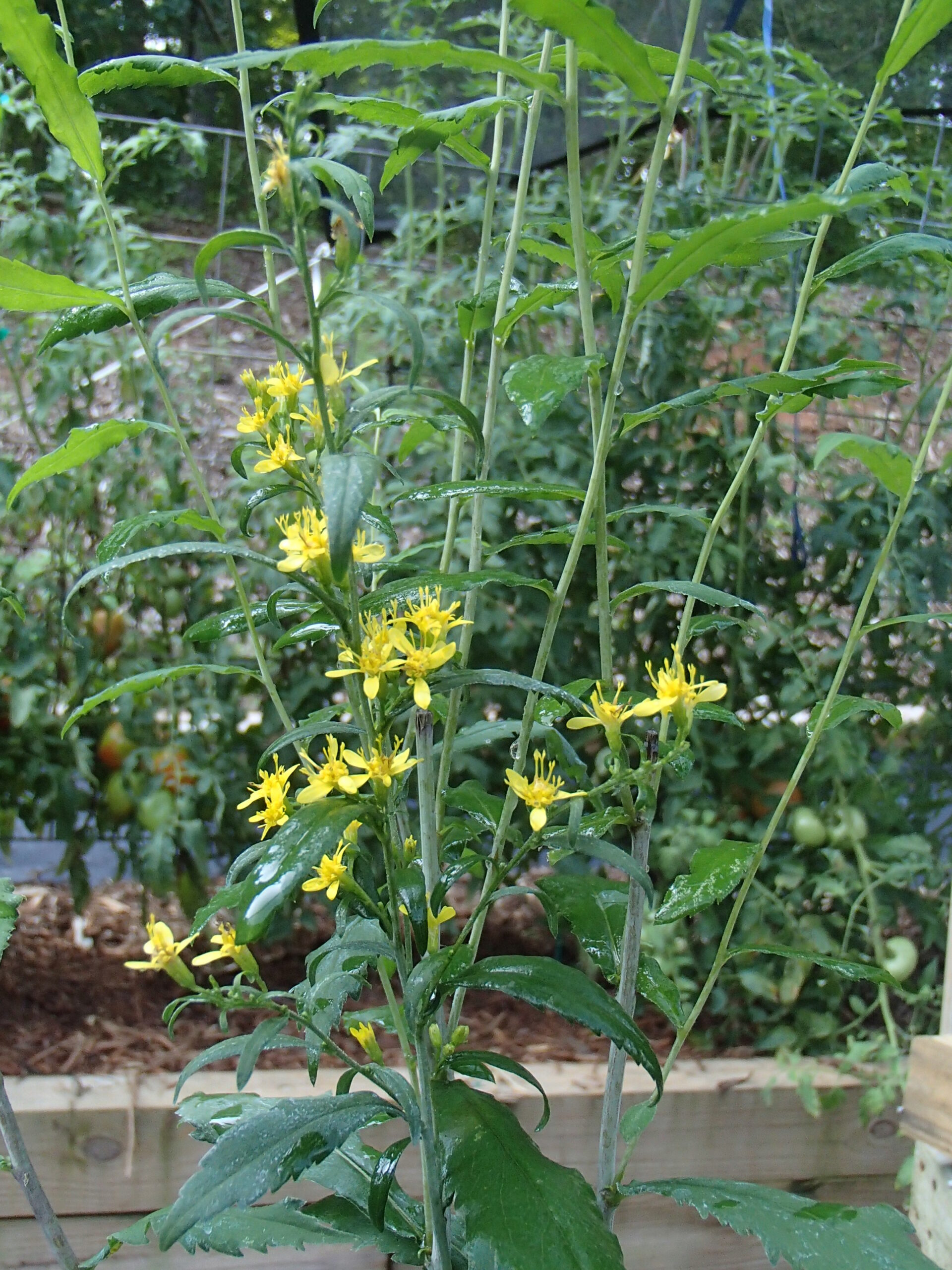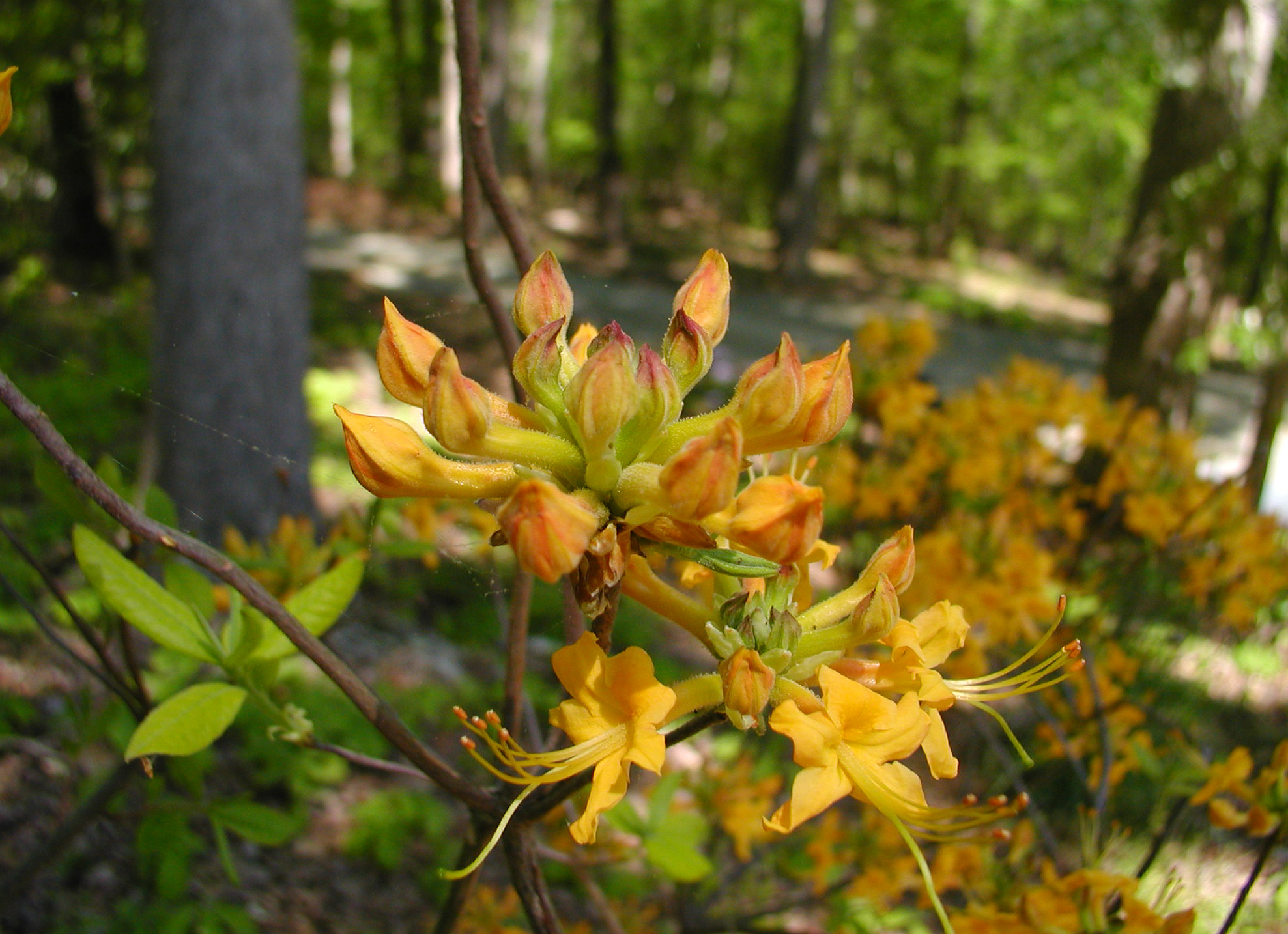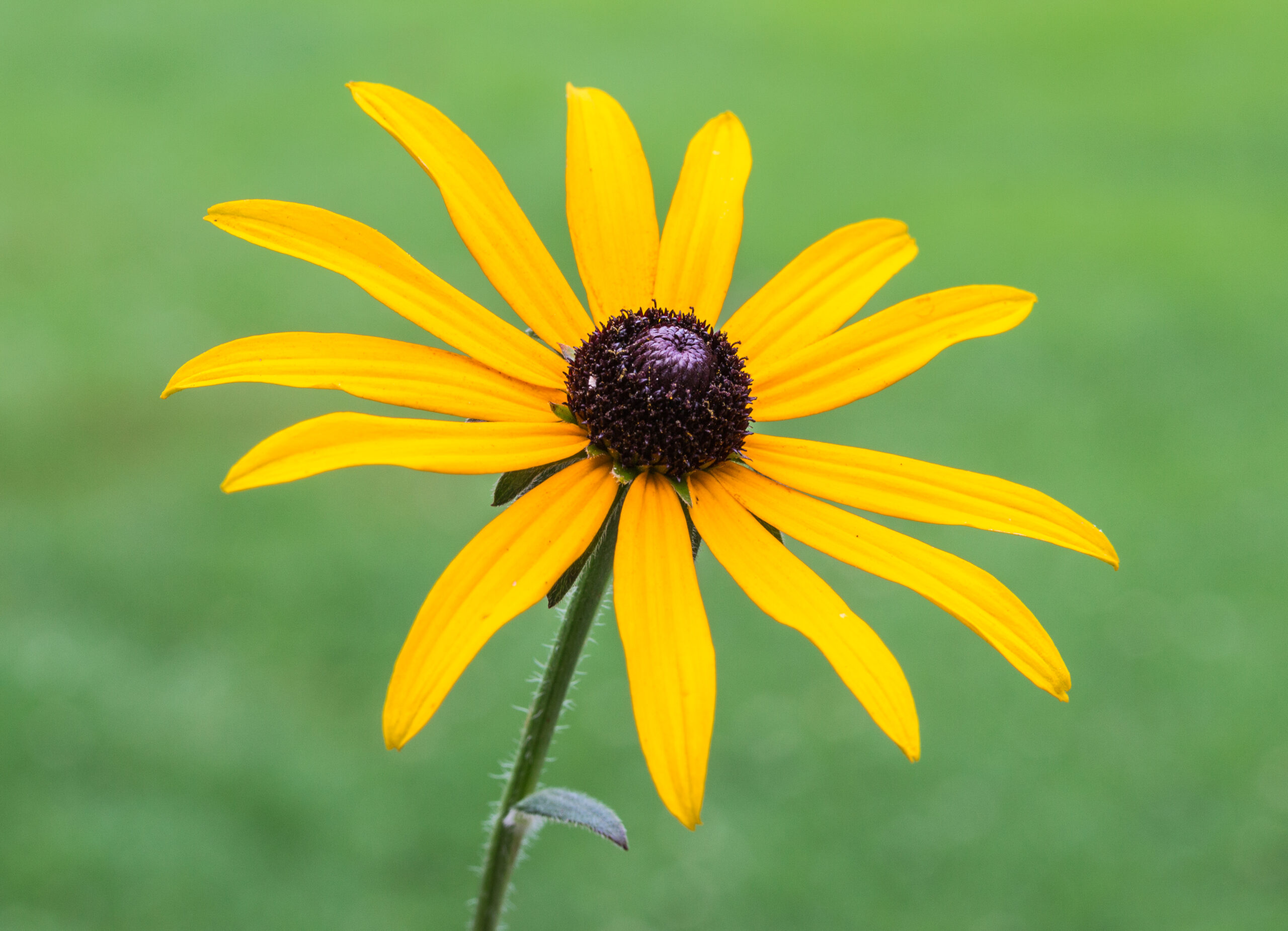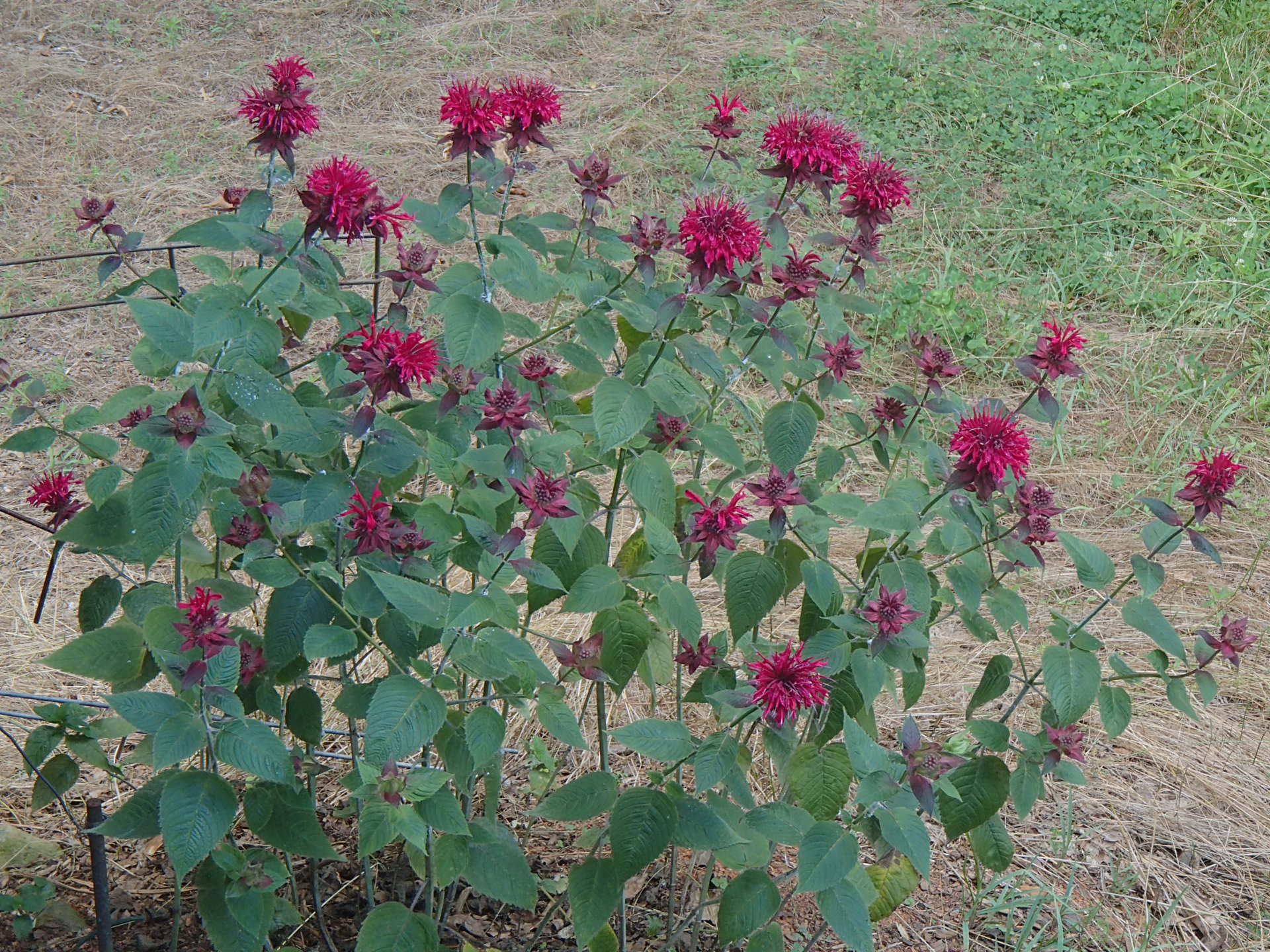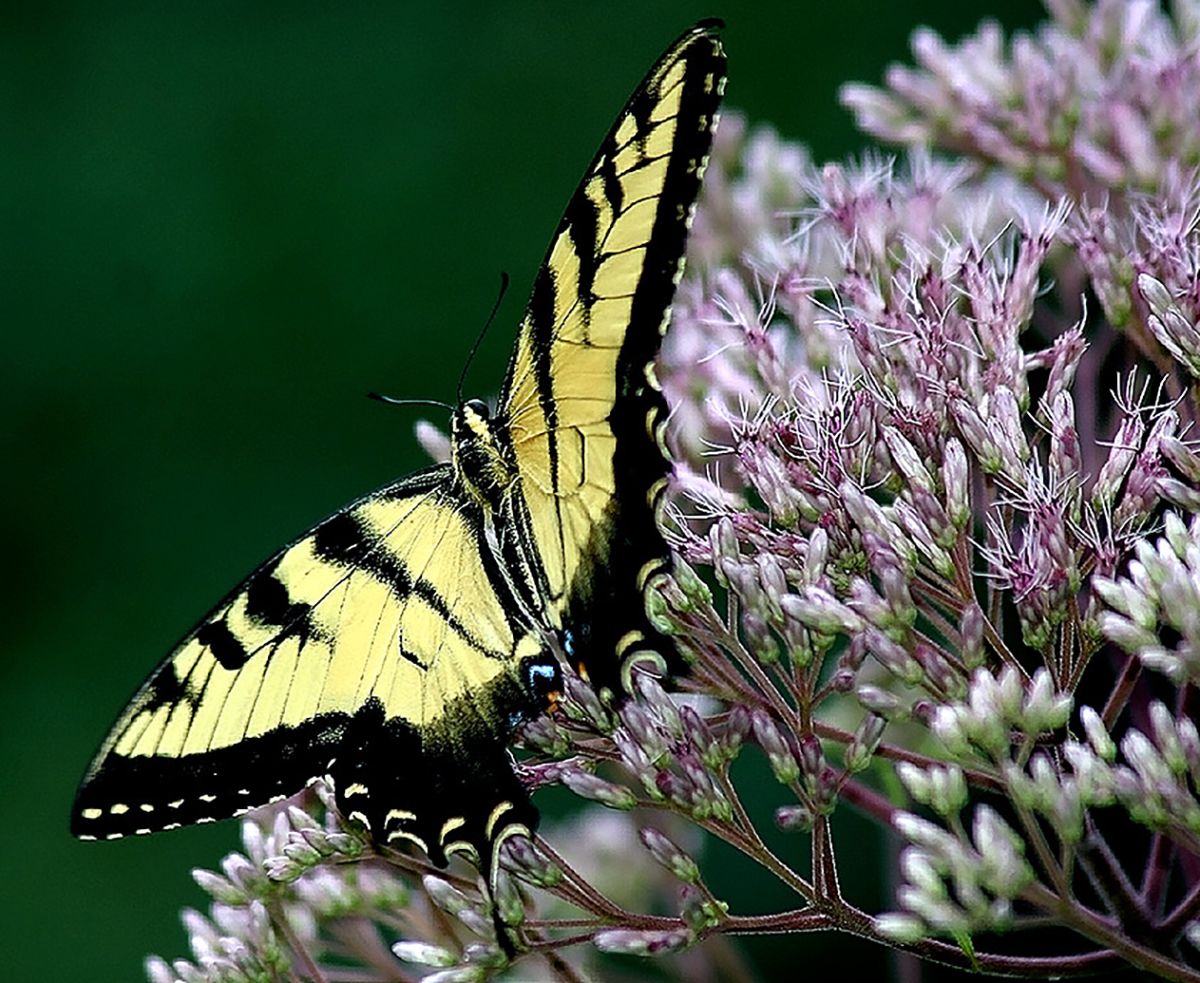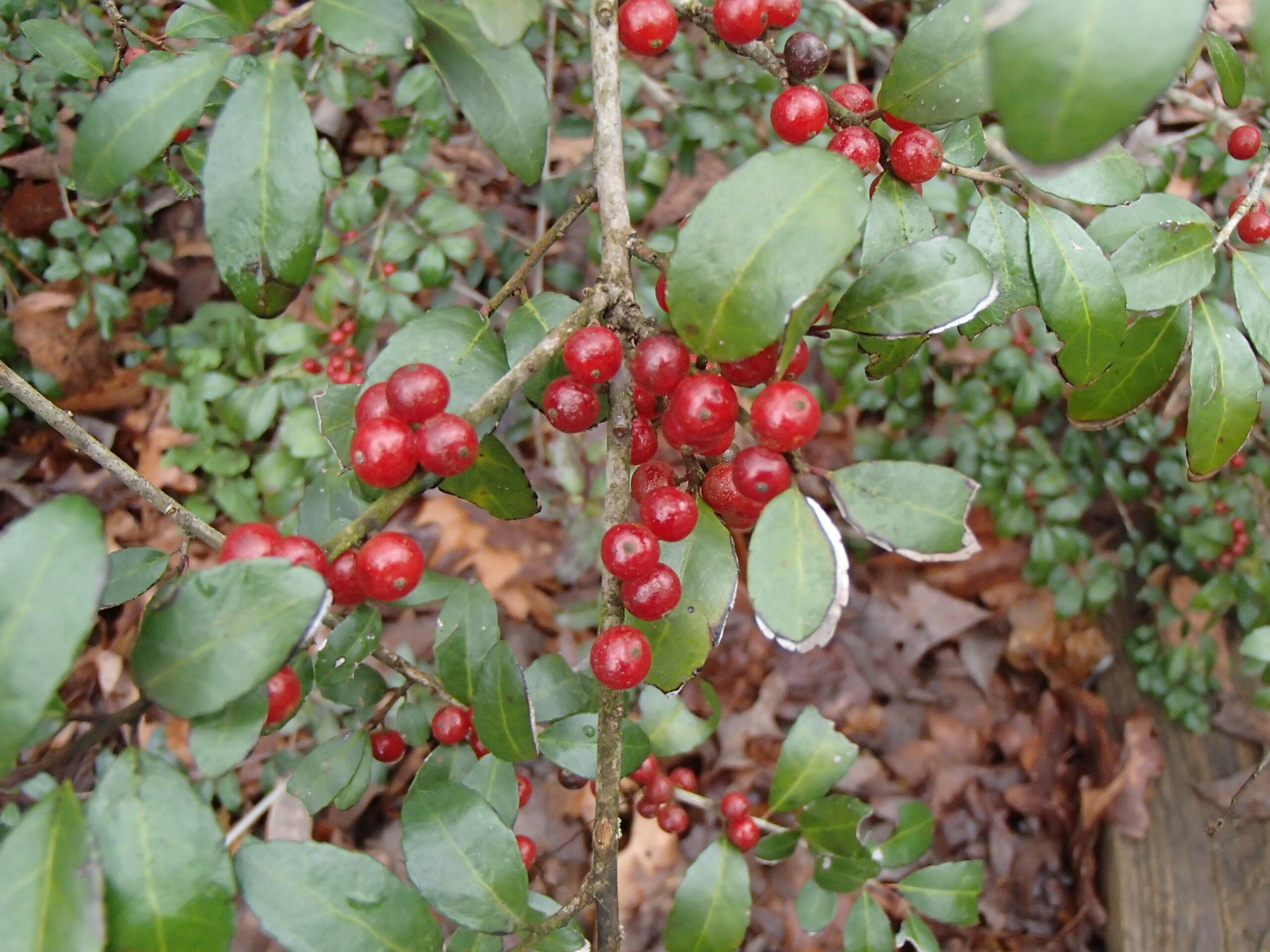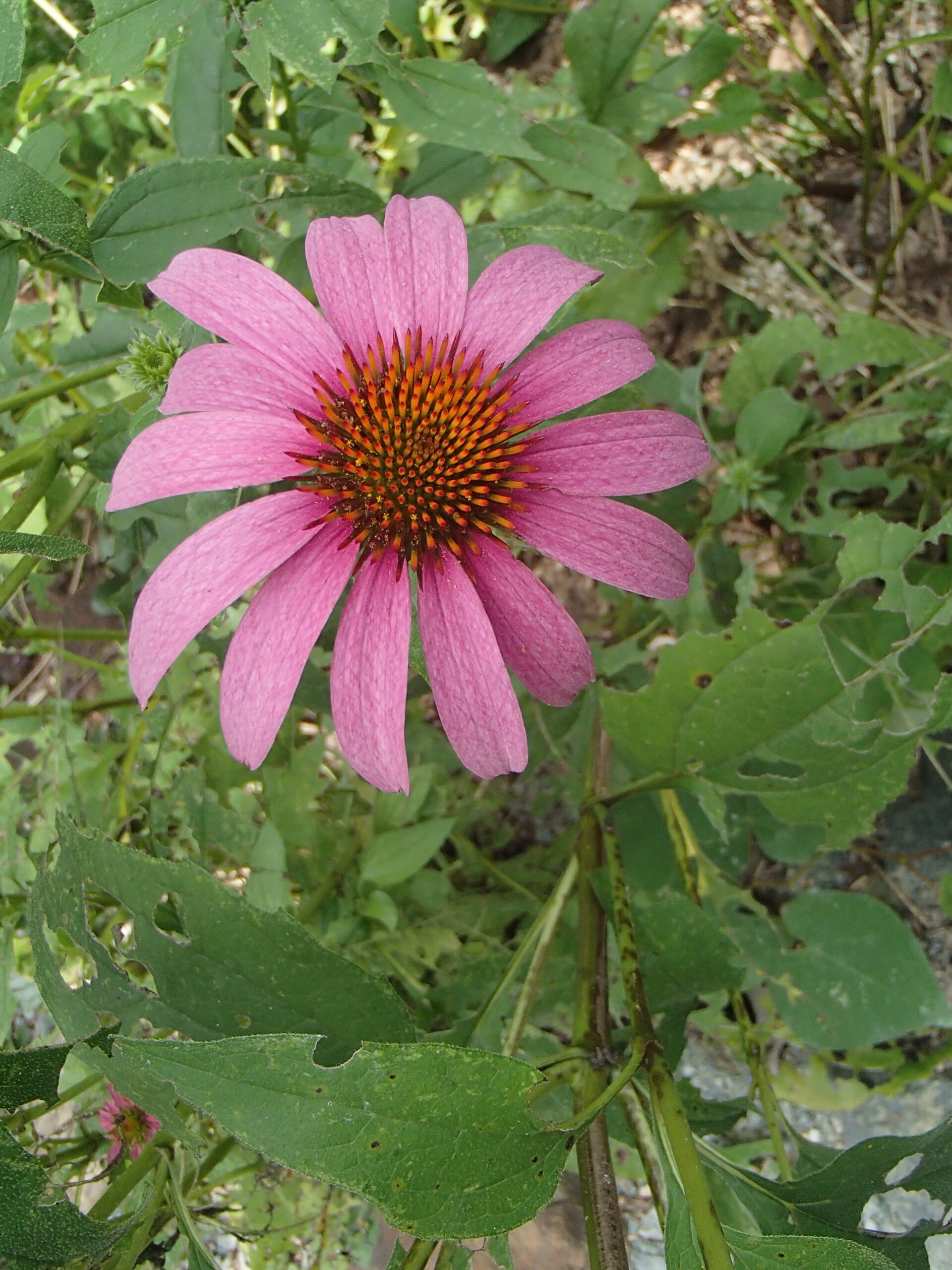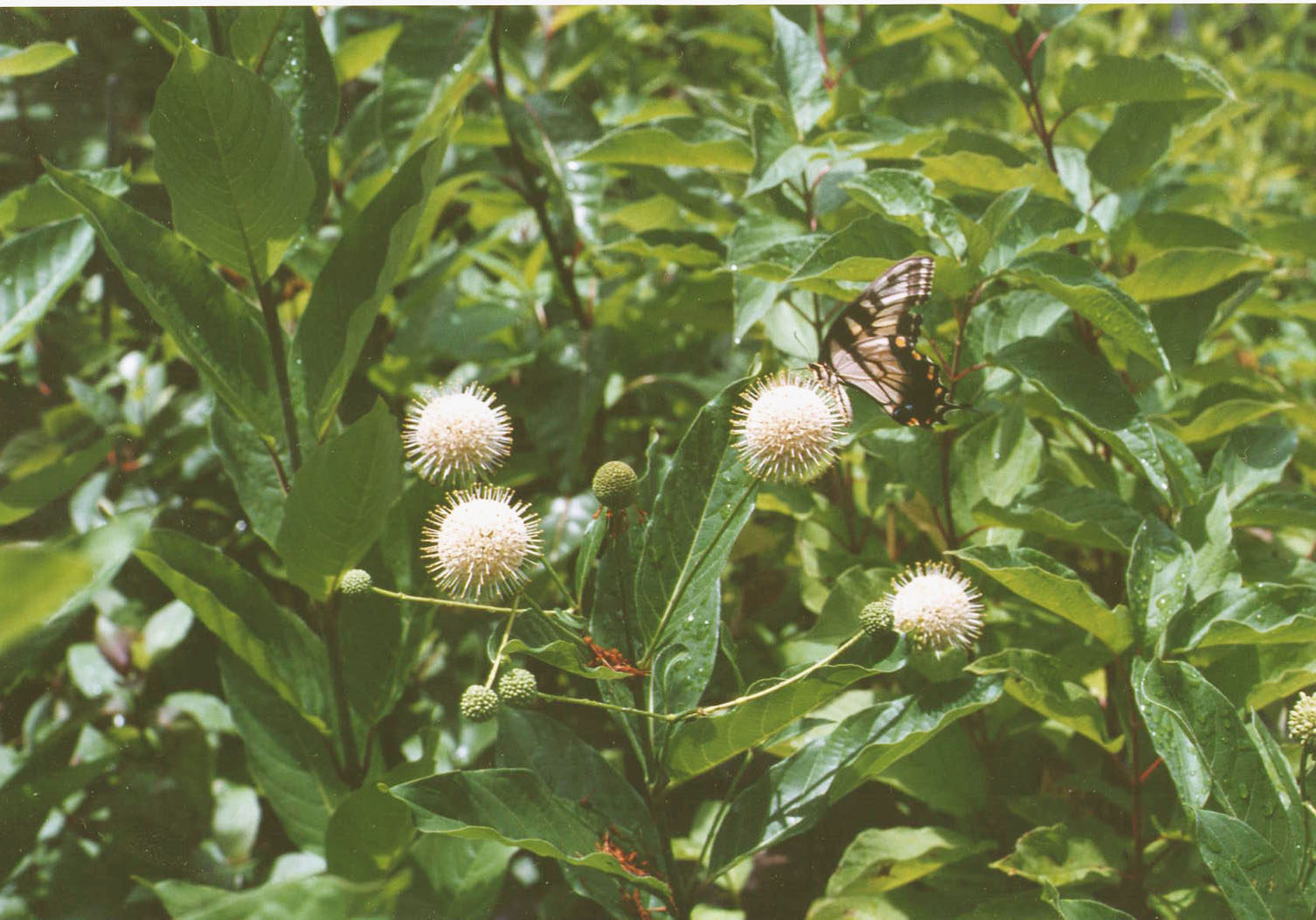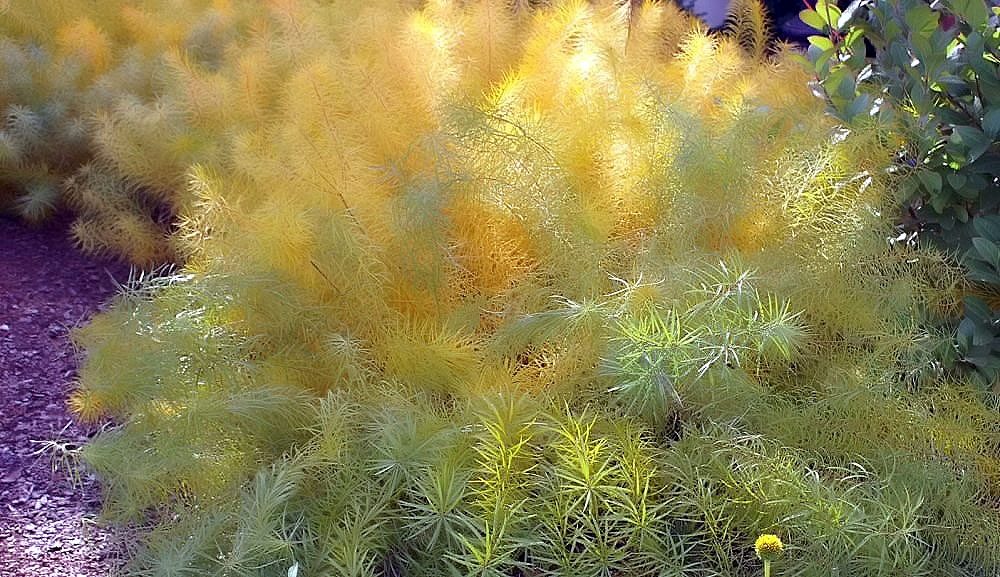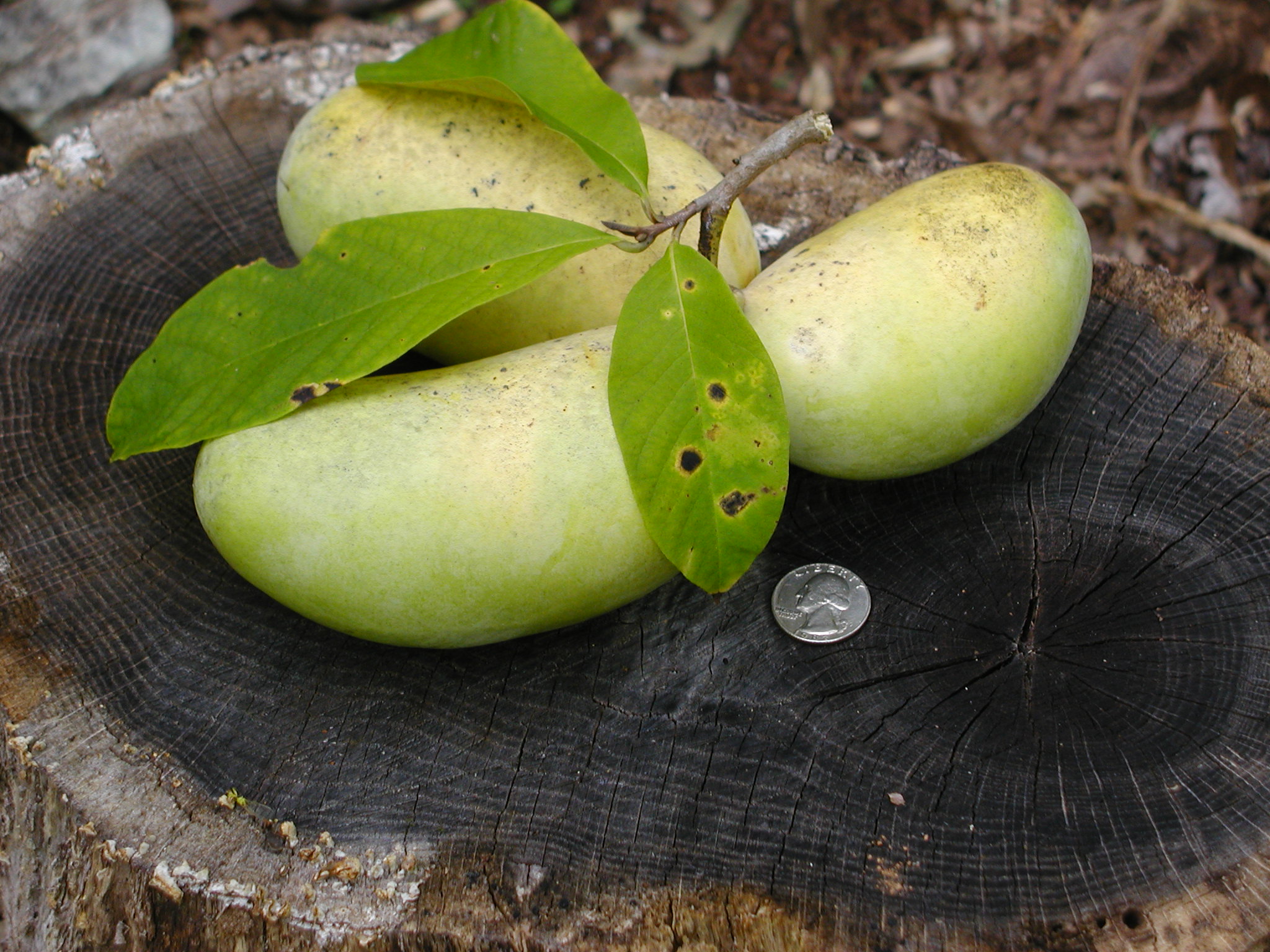NURSERY HOURS
Wednesday: 10-4 Thursday: 10-6 Friday-Saturday: 10-4 Sunday: 12-4
January 24, 2024
Sedum ternatum
Woodland Stonecrop is the only succulent we currently offer at Rachel’s Native Plants, and it’s a special one. In spring to early summer, white flowers hover over fleshy green leaves, attracting many pollinators. Not being picky, it thrives in a variety of light conditions, as long as the soil doesn’t…
April 10, 2022
Andropogon glomeratus
Bushy Bluestem is a tufting, sturdy, warm-season grass that may grow 2 to 6 feet in height. Interesting, beard-like flowers appear in fall. This plant prefers moist to damp sites and is not drought tolerant & has high flammability (do not plant near your home). This plant has green leaves in…
November 14, 2021
Prunus serotina
The Black cherry is an important southern tree for both wild life and commercially. Young black cherries tend to have a conical crown but when given enough room, the mature trees develop long limbs and arching branches giving it an oval shaped crown. The Black cherry’s fall foliage is a golden…
November 13, 2021
Packera aurea
Golden Ragwort is a very versatile flowering perennial member of the Asteraceae which we have found useful in various garden circumstances. It is native to the entire Eastern half of the U.S., and in North Carolina it is reported to occur in mountain and piedmont counties. While USDA says it occurs…
November 13, 2021
Lyonia mariana
Piedmont Staggerbush is a cute little shrub, averaging three to six feet tall. It is an upright shrub with alternate, simple, and oblong leaves. The flowers bloom in clusters of racemes of columnar-shaped, white to pink flowers. It grows well along marshes and shrubby swamps, but also wood edges and well-drained…
November 12, 2021
Kosteletzkya pentacarpos, previously known as Kosteletzkya virginica
Seashore Mallow is a lovely, salt tolerant herbaceous perennial (some call it a subshrub) native to the Eastern shore of the U.S. The toothed, roughly triangular leaves and stems are softly hairy with tiny stellate (star-shaped) hairs. An obligate wetland plant, it thrives in full sunlight and wet soil. It is…
August 2, 2021
Aronia prunifolia
Aronia prunifolia or Purple Chokeberry is a natural hybrid between A. arbutifolia (Red Chokeberry), and A. melanocarpa (Black Chokeberry), a more mountainous species. All three Chokeberries have very diferent distribution maps. Purple Chokeberry is much less abundant than the Red Chokeberry. It is much like Red Chokeberry in habit, that is,…
June 20, 2021
Monarda punctata
Horsemint or Spotted Beebalm is an erect, mostly unbranched, perennial wildflower, instantly recognized by its unusual “stacked” arrangement of multiple whorls of two-lipped, cream-colored, purple-speckled tubular flowers on the same stem. Each whorl is subtended by attractive and persistent pink to lavender leaf-like bracts. Leaves are narrow with a fine grayish-white…
June 18, 2021
Gelsemium sempervirens
Carolina Jessamine is a vigorous, evergreen, high-climbing woody vine native from Virginia to Florida, west to East Texas and down into Central America. It is a staple ornamental in the south because it has bright golden, fragrant flowers attractive to bees, butterflies and birds, including hummingbirds. Jassamine is a twining vine,…
April 29, 2019
Phlox ‘Jeana’
Garden Phlox is a staple of the late summer and early fall garden and ‘Jeana’ is a super-rewarding cultivar of it to grow. It provides wonderful color with its bright pink, aromatic flower clusters, attractive to people, butterflies and hummingbirds alike. Named after a woman in Nashville who identified this genotype,…
April 29, 2019
Chrysogonum australe
Green-and-Gold, of which there are several forms, is a hardy, low-growing, long-blooming herbaceous perennial found along woodland edges and clearings on the East coast from New York south to Florida and west to Louisiana. With attractive, semi-evergreen foliage, bright yellow 1.5-inch daisy-like flowers on fuzzy stalks for much of the growing…
April 29, 2019
Diervilla ‘Troja Black’
Mountain or Georgia Bush Honeysuckle is a selection of our native Bush Honeysuckle, a small shrub endemic to our southern Appalachians. This low, spreading shrub (3-4’h x 3-5’w) with an arching habit grows well in full sun to part shade at lower elevations like our Piedmont as well as in the…
April 29, 2019
Franklinia alatamaha
One reason the Ben Franklin tree is grown is because it is attractive: fragrant, 3-inch flowers with delicate white petals and thick, bushy golden stamens, and foliage that is handsome, with outstanding fall coloration (red, purple, orange). But mostly it is grown because it is rare and has a great story.…
April 29, 2019
Helianthus ‘Mellow Yellow’
Swamp Sunflower is a clump-forming, upright, late-blooming perennial sunflower — the latest flowering of the sunflowers (October and even November). It is found in bottomlands, swamps, and other natural wet habitats as well as in disturbed wet areas, on roadsides and in ditches. It thrives in full sun in moist soils…
April 29, 2019
Hibiscus coccineus
Although Scarlet Rosemallow in nature grows in wet places (the Wetland Indicator Status is “Obligate”), this herbaceous perennial thrives in upland gardens, and should be invited to do so! Adjectives such as “statuesque” and “architectural” come to mind. If given a sufficiently large sunny space, Rosemallow will express its full natural…
April 29, 2019
Hibiscus laevis
This plant is not currently for sale. This is an archive page preserved for informational use. The Halberdleaf Rosemallow is a big (3-6 feet), wet-loving herbacious perennial found in a few coastal and piedmont counties in NC but which is much more common in the Mississippi River valley and midwestern…
April 29, 2019
Hibiscus moscheutos ‘moscheutos’
Crimson-eyed Rosemallow is a robust wetland herbaceous perennial native to most of Eastern North America up to New York. It is shrub-like, with multiple, unbranched stems 3-7′ in height. Large, single flowers occur in upper leaf axils, with delicate petals ranging from white to pink but always with a maroon “eye”.…
April 29, 2019
Hibiscus moscheutos ‘palustris’
This plant is not currently for sale. This is an archive page preserved for informational use. There is disagreement and confusion about whether Hibiscus moscheutos and Hibiscus palustris constitute separate species, subspecies, or varieties, and we are not in a position to clarify! We are proceeding with propagating and selling…
April 29, 2019
Hydrangea quercifolia
Oakleaf Hydrangea, the quintessential flowering shrub for the native garden, is a deciduous shrub native to our southeastern states with outstanding ornamental value. Its growth form is broad, rounded, with lower stems sweeping the ground; with beautiful exfoliating bark and bold, handsomely lobed, deep green leaves, holding aloft great pyramidal, fragrant…
April 29, 2019
Lonicera ‘John Clayton’
This plant is not currently for sale. This is an archive page preserved for informational use. John Clayton’ is a cultivar of Coral Honeysuckle’s forma sulphurea (yellow form). It has the same charming leaf forms as Coral Honeysuckle and lovely warm yellow 2-inch trumpet-shaped flowers. It blooms in late spring,…
February 28, 2019
Viburnum prunifolium
Smooth Blackhaw, native to much of mid-latitude Eastern and central U.S., is a large deciduous shrub or small tree which usually grows to around 15 feet tall and wide, but if grown as a single-stemmed tree form, it can reach up to 30 feet. It thrives in full sun to part…
February 28, 2019
Viburnum rafinesqueanum
This Viburnum — with its showy, flat-topped or domed white flowers and opposite, toothed leaves typical of Viburnums — stands out from its cousins because in addition to being handsome, it is a well behaved, small (6-foot) shrub that plays well with others. Two of them have volunteered on our property…
February 28, 2019
Viburnum rufidulum
Rusty Blackhaw is one of our Southern woodland viburnums whose range is central and southeastern U.S. In NC it occurs mostly in piedmont and coastal plain counties. It is a deciduous, dense, showy, highly arching understory shrub or small tree. Mature height is about 18′, but can be taller if grown…
February 28, 2019
Wisteria frutescens ‘Amethyst Falls’
Wisteria frutescens is a deciduous, woodland flowering vine 25 – 30′ in length, native to the coastal plain along our southeastern states, around along the Gulf coast over to Louisiana and up the Mississippi Rivery valley to Arkansas and Kentucky. It grows in damp habitats. The forest-threatening, thuggish Asian wisterias (both…
February 28, 2019
Yucca filamentosa
Adam’s Needle is a broadleaf evergreen, suckering shrub from the Southeastern states. Although stemless, it has a rosette of stiff, sword-shaped leaves with loose filaments attached at the leaf margins, which distinguish it from other members of the genus. While these leaves reach only 2-3 feet in height, the flower stalks…
February 28, 2019
Zizia aurea
Zizea aurea, or Golden Alexander, is an herbaceous perennial found in piedmont and mountain counties of NC but is much more widespread in the midwest, north central and northeastern states. It consists of 30-inch, branching, erect, reddish, ridged stems which, like others in the carrot family, are hollow between the nodes.…
February 28, 2019
Vaccinium corymbosum
The beloved Highbush Blueberry is a deciduous shrub native to much of Eastern North America, with outstanding landscape value over three seasons. It’s clusters of dainty, hanging, bell-shaped, white-pink flowers are lovely in spring, followed by tasty blue berries that ripen in summer. These are valued by humans, birds, and smaller…
February 28, 2019
Vaccinium darrowii ‘Rosa’s Blush’
Rosa’s Blush’ is a cultivar of a small Vaccinium species native to sandy pinelands and sand dunes in counties along the Gulf Coast as far West as Louisiana, and frost tolerant to zone 8a (some say, zone 7). There is disagreement as to whether this shrub should be grown for its…
February 28, 2019
Viburnum acerifolium
Mapleleaf Viburnum is native to much of Eastern North America, inhabiting upland, dry woods. In NC, it is reported in mountain and piedmont counties only. It is a smaller member of the Viburnum genus, averaging only 4-6 feet tall. It suckers strongly, however, and forms colonies of sparsely branched shoots, and…
February 28, 2019
Viburnum dentatum
Southern Arrowwood is a dense, 8-10-foot shrub native to Eastern U.S. It is composed of many upright, spreading, straight stems and bears typical-Viburnum 3-inch, flat-topped corymbs of small creamy white flowers followed in mid-summer by blue-black seeds which generously support a range of birds and other animals. It is so useful…
February 28, 2019
Viburnum nudum
Possumhaw Viburnum is a 12-15-foot tall (some report up to 20 feet) x 12-15-foot wide, deciduous, wet-tolerant shrub of surprising ornamental value found in Eastern states from Texas north to Canada. It ioccurs in all three NC zones, mountains, piedmont and coastal plain, though in the mountains the quite similar Viburnum…
February 28, 2019
Viburnum opulus
This plant is not currently for sale. This is an archive page preserved for informational use. Cranberrybush Viburnum or Highbush Cranberry is a dense, arching, deciduous shrub six to ten feet (or even taller) native all across Canada and our northern states down as far as a couple of counties…
February 28, 2019
Spiraea tomentosa
Our area (NC and surrounding states) represents the southern tip of the range for this shrub, which is much more common to the north. In NC and Va it occurs in some mountain counties and some coastal plain/lower piedmont counties. The common name “Steeplebush” reflects it’s pink steeple-like blooms in late…
February 28, 2019
Stokesia laevis
This super-attractive, butterfly-drawing herbaceous perennial is small (1-2′ high x 1-2′ wide) with large (2-3 inch) very showy, usually single flowers ranging from cornflower blue (most often) to lavender and even, occasionally, white. The flower structure of Stokes aster reflects its membership in the Aster family: deeply notched blue or lavender…
February 28, 2019
Asclepias verticillata
Whorled Milkweed is a tough, attractive herbaceous perennial easily grown in dry, sunny locations in naturalistic as well as garden settings. It is on the small side, reaching 2.5 feet high and wide, with bright white flowers and delicate, whorled foliage. Like all Milkweeds, it is toxic to livestock, so it…
February 28, 2019
Itea virginica
Iteaceae is a family of only one genus of trees and shrubs, and of the 27 species in that genus, Itea is the only one found in the U.S. (the vast majority of the others being from east Asia). Virginia Sweetspire, as often known as Itea, is a versatile and lovely…
February 28, 2019
Symphoricarpos orbiculatus
Coralberry is a very showy colonial shrub native in the eastern and central United States, as well as central Canada (Ontario) and northeastern Mexico. It reaches 4+ feet, with smooth, opposite, dull green, oval-shaped leaves and shreddy bark. Greenish white flowers are tucked under the leaves in early summer, developing later…
February 28, 2019
Symphyotrichum cordifolium
The common Blue Wood Aster (of which ‘Avondale’ is a cultivar) is an herbaceous perennial native to a huge swath of north-central-eastern North America, and the counties in NC where it is reported represent the southeastern tip of its range. Found in dry to moist (well drained) deciduous woodlands and woodland…
February 28, 2019
Symphyotrichum oblongifolium ‘October Skies’ and ‘Raydon’s Favorite’
Aromatic Aster is a tried and true source of stunning blue color in the late season perennial garden, where it is seen to play dramatically against rich fall yellows and golds and oranges. It is shrub-like and bushy, compact, reaching 1-2+ feet and usually totally covered in blooms for up to…
February 28, 2019
Tiarella cordifolia collina
Foamflower is a beautiful, clumping flowering perennial with immense versatility for shady gardens, featuring racemes of starry florets with a “foamy” effect above foot-tall mounds of attractive basal foliage. The leaf shape may vary from almost heart-shaped to deeply lobed with pronounced venation, and the leaf veins are often tinged with…
February 28, 2019
Tiarella cordifolia cordifolia
Foamflower is a beautiful, clumping flowering perennial with immense versatility for shady gardens, featuring racemes of starry florets with a “foamy” effect above foot-tall mounds of attractive basal foliage. The leaf shape may vary from almost heart-shaped to deeply lobed with pronounced venation, and the leaf veins are often tinged with…
February 28, 2019
Vaccinium arboreum
This plant is not currently for sale. This is an archive page preserved for informational use. Sparkleberry or (Farkleberry) is an attractive, tough, underused woodland shrub usually eight to ten feet in height, though occasuinally it takes on a tree form. It is found in dry woods and open forests from…
February 28, 2019
Solidago caesia
Wreath (or Bluestem) Goldenrod could have been so named for its plant form, growing to 2-3′ in gracefully arching, mostly unbranched shoots with bright flowers positioned in the axils of leaves all along the stems. It is smaller and less aggressive than most of its cousins, and more suitable for cultivation…
February 28, 2019
Solidago odora
Sweet Goldenrod is found in open woods and savannahs in coastal states from New Hampshire south to Florida and over to east Texas, and inland as far as Missouri. (In northern Florida there is a separate subspecies, Chapmanii.) It occurs in most of the counties of NC. Sweet Goldenrod grows to…
February 28, 2019
Spigelia marilandica
This plant is not currently for sale. This is an archive page preserved for informational use. Indian Pink is a beautiful and unique herbaceous perennial which is currently enjoying great popularity among native plant gardeners. This is a good thing as North Carolina lists it as Endangered and Natureserve lists it…
September 17, 2018
Pinckneya bracteata (formerly Pinckneya pubens)
Fevertree is a large, graceful, deciduous shrub or small tree valued in the landscape for its rich green foliage and a long lasting display of beautiful pink in midseason. While the actual flowers of the Fevertree are greenish yellow and inconspicuous, these are surrounded by large, showy, whitish to deep rose…
September 17, 2018
Polemonium reptans
Jacob’s Ladder is a sweet herbaceous perennial wildflower not common in N.C. (only in 2 counties), but native to rich, moist woodlands in much of Eastern North America. The flowers are a dainty, bright shot of blue on 1 -1.5 foot high spray of foliage in a spring garden. From April…
September 17, 2018
Polystichum acrostichoides
Common in forested stream bottoms and damp slopes and ravines across Eastern North America, Christmas fern is the workhorse fern for gardens and naturalized areas in the mid-Atlantic region. It is a sturdy, attractive, medium sized (2 foot) fern which is evergreen (though the fronds fall flat on the ground in…
September 17, 2018
Pycnanthemum virginianum
Virginia Mountain Mint is an herbaceous perennial of the Mint family found mostly in north central and north eastern U.S. Two counties in NC are among a very small handful of counties reporting this plant in the southeast. Nevertheless, we are respectful of its potential value in our landscape for a…
September 17, 2018
Rhododendron atlanticum
Dwarf Coastal Azalea, one of the smaller native azaleas at about 6 feet (with more exposure to light, usually on the order of 4 feet), occurs in sand hill and coastal communities from southern New Jersey to Georgia. It is adorned in spring (April, May) with clusters of wonderfully aromatic, funnel-shaped…
September 17, 2018
Rhododendron flammeum (synonym Rhododendron speciosum)
The Oconee or Piedmont Azalea is a beautiful deciduous shrub native to woods, slopes, sandhills and edges of stream banks in a few counties in the piedmont of South Carolina and Georgia. It is easy to remember this shrub: Native to a hot area, it is exceptionally heat and drought tolerant…
September 17, 2018
Rhododendron periclymenoides (synonym R. nudiflorum)
The Pinxter Azalea is a deciduous native azalea famous for it’s stunning flowers all the way from New Hampshire to Alabama. In NC, it is present in most counties of the state except for the highest mountain counties and the swampiest counties in the northeast corner. Pinxter Azalea’s funnel-shaped flowers, with…
September 17, 2018
Rhododendron viscosum
Swamp Azalea is a shrub up to 8 ft tall at maturity with an upright, loosely branched, multi-stemmed habit and a tantalizing, musky floral scent in late spring. Clusters of very fragrant bright white (often with pink accents), trumpet-shaped flowers with five petals, slender tubes and elegant, exserted stamens appear in…
September 17, 2018
Rhus aromatica ‘Gro-low’
Rhus aromatica, or Fragrant Sumac, is a deciduous, thicket-forming shrub found in dry, open woods in most states of eastern U.S. (In NC, it is found mostly in piedmont counties.) Fragrant Sumac has a variable, sprawling, irregular form. It is reported by some to grow as tall as 12 feet in…
September 17, 2018
Rudbeckia fulgida ‘Goldsturm’
This plant is not currently for sale. This is an archive page preserved for informational use. Black-Eyed Susan ‘Goldsturm’ — sometimes called “Orange Coneflower” even though it is neither orange nor an Echinacea — is one of the most popular, tried and true garden perennials. These beautiful golden flowers are easy…
September 17, 2018
Rudbeckia fulgida ‘fulgida’
This natural variety of Black-Eyed Susan is found in meadows and on roadsides in the eastern United States from New York to the Florida panhandle and west to Illinois and Mississippi. It is a lovely wildflower, hugely useful in the garden. The plant is 2-3′ high x 1.5 – 2′ wide…
September 17, 2018
Sambucus canadensis (synonym Sambucus nigra ssp. canadensis)
Elderberry is a vigorous, beautiful shrub commonly observed on roadsides and in hedgerows and disturbed areas in most NC counties and most states as well. It is a a vigorous grower, 5-12′ in height and spread, with arching branches which support numerous flat-topped white flower clusters in mid-summer. These retain their…
September 17, 2018
Phlox subulata ‘Amazing Grace’
Phlox subulata ‘Amazing Grace’ is a cultivar of Phlox subulata ssp. subulata (see that entry). The flowers of ‘Amazing Grace’ are bright white with the tiny golden exserted stamens closely surrounded by small maroon markings (nectar guides) at the base of the petal lobes. The USDA plant distribution map linked below…
September 17, 2018
Monarda didyma
Beebalm is a showy herbaceous perennial herb in the Mint family, very popular in Southeastern gardens for its long bloom time and easy nature. Bright red, somewhat coarse flowers are supported by sturdy, three-foot tall, square stems in July and August here in the piedmont, making excellent cut flowers.Our southern Appalachians…
September 17, 2018
Monarda fistulosa
Wild Bergamont is a fantastic wildflower native to almost every state in the country! Like other members of the mint family, it has square stems with coarsely toothed and slightly hairy opposite leaves. Wild Bergamont flowers are…well, kind of wild; they are lavender to pink, with irregular tubular petals, protruding from…
September 17, 2018
Morella cerifera
Wax Myrtle is an amazingly versatile evergreen shrub or small tree which is such a great wildlife plant that it could be useful for increasing the pollinators and birds in your yard. Its foliage is very fragrant, and evergreen, and the blue berries are attractive to people as well as to…
September 17, 2018
Oenothera fruticosa
Southern Sundrop is a day-flowering perennial (from the Evening Primrose family) native to much of Eastern North America and reported nearly throughout NC. Its habit is upright, (two feet tall x 1.5 feet wide), a little sprawling, with an overwintering evergreen basal rosette. It’s obvious value in the garden is from…
September 17, 2018
Passiflora incarnata
Purple Passion Flower is an attractive, fast -growing perennial vine reported to occur in most counties of NC and in most Southeastern states. Climbing by means of axillary tendrils, it grows to 12 feet (some say up to 25 feet, but we have not seen that) and is naturally found in…
September 17, 2018
Penstemon smallii
Small’s Beardtongue is a bright perennial wildflower which naturally grows in the rocky soils of the Blue Ridge Mountains. Green to purplish stems rise from an attractive bronzy-tinted winter rosette. In early summer, it has tubular, snapdragon type bright pinkish-purple blossoms that attract hummingbirds and beneficial insects. They are lavender on…
September 17, 2018
Phlox divaricata
Wild Sweet William or Woodland Phlox is a beautiful and beloved wildflower that can brighten a shady area in need of spring color, — ranging from a soft exquisite true blue to lavender and occasionally, white. It occupies a position between the low groundcover phloxes and the tall garden phloxes. During…
September 17, 2018
Phlox maculata
Speckled Phlox is an upright, clumping, herbaceous perennial with beautiful bright clusters of small, aromatic, tubular flowers. It grows in moist meadows, along riverbanks and in bottomland woodland openings in the eastern mountains and piedmont and in the midwest, although it is not really common in the wild. Generally unbranched, the…
September 17, 2018
Phlox nivalis
Phlox nivalis, or Traliling Phlox, is a low growing, early flowering, sun-loving species of Phlox which presents as a mound-forming mat of stiff, needle-like, evergreen foliage. Although reported in all three NC zones (mountains, piedmont, coastal plain) its strongest presence appears to be in sandhill and dry habitats of the central…
September 17, 2018
Phlox stolonifera ‘Sherwood Purple’
Phlox stolonifera, or Creeping Phlox, is a low-growing Phlox found in rich deciduous woodlands, along stream banks and shaded rocky slopes mostly in the Appalachian Mountains from Pennsylvania to Georgia. Unlike the other ground-hugging Phloxes, therefore (which hale from more xeric locales), this one thrives in shady and semi-shady niches on…
September 17, 2018
Phlox subulata ssp. subulata
Phlox subulata, often called Moss Pink even though it comes in as many colors as the other groundcover Phloxes, is a mat-forming, sun-loving, semi-evergreen herbaceous perennial found in rocky and sandy barrens from New York to Michigan and south to Georgia and Louisiana. Leaves are needle-like or linear, and the vegetative…
September 17, 2018
Lindera benzoin
Spicebush is a shrubby tree — five to ten feet-tall (and often wider than tall) — which has a great many attributes, beginning with its wonderfully spicy-citrusy aromatic foliage. The blooming period for Spicebush occurs during the mid-spring and lasts about 2 weeks. The males (yes, it is dioecious) have showier,…
September 17, 2018
Liriodendron tulipifera
This plant is not currently for sale. This is an archive page preserved for informational use. Tulip Poplar is a superbly shaped deciduous canopy tree, one of the tallest of the eastern hardwoods. Individuals have reached 190 feet in height, but the average Tulip Poplar is only on the order…
September 17, 2018
Lonicera sempervirens
It is a joy to write about Scarlet Honeysuckle today because as I write, the intensely scarlet flowers are brightening up the green world along my driveway. Because it is a climber, the deep crimson color meets the eye at different elevations (although it does not seem to flower on the…
September 17, 2018
Lobelia cardinalis
Cardinalflower is a handsome wildflower known for it vibrant red (occasionally white or rosie pink) floral spikes on sturdy, upright stems three to four feet tall and occasionally taller. It is valued by gardeners not just for the deep scarlet color and relatively tall, erect form but also because it attracts…
September 17, 2018
Lobelia siphilitica
The Great Blue Lobelia is a colony-forming, clumping perennial which is well known for its long-lasting, deep violet-blue floral spires from late summer to mid-autumn. The deep blue floral racemes play exceedingly well against the dominant yellows of other fall garden greats, and draw their own share of butterflies, bees and…
September 17, 2018
Ilex vomitoria ‘Taylor’s Rudolph’
‘Taylor’s Rudolph’ is a cultivar of a beautiful and hardy native species of Holly that grows in coastal NC as well as other Southeastern states. Both ‘Taylor’s Rudolph’ and the species are evergreen; both are very adaptable, thriving in a range of cultural conditions from moist to dry, in full sun…
September 17, 2018
Juniperus virginiana
Eastern Red Cedar is a sturdy, aromatic, evergreen, pyramid-shaped or columnar tree which usually grows to about 60 feet, though it can reach 90 feet. This species is considered a pioneer tree that colonizes sunny areas that are relatively dry and sterile. Adapted to dry habitats, it is native throughout central…
September 17, 2018
Juniperus virginiana ‘Blue Arrow’
‘Blue Arrow’ is a cultivar of Eastern Red Cedar, an evergreen tree of wide variability in form, seen on roadsides and hedgerows throughout the eastern U.S. ‘Blue Arrow’ was selected to provide a reliable, vertical evergreen accent in a more formal landscape. Red Cedar (the species) is dioecious, with seed cones…
September 17, 2018
Juniperus virginiana ‘Poyo’
Juniperus virginiana is a tough, widely distributed native evergreen tree with many outstanding attributes (see our listing for the species) and ‘Poyo’ is a dwarf, spreading cultivar which displays most of the attributes of the species, but answering a need for a shrub-like form. Since it is asexually propagated (is a…
September 17, 2018
Liatris spicata
Dense Blazing Star is a clump-forming perennial found naturally in moist meadows in Eastern North America. In the Carolinas it is reported mostly in coastal counties. Dense Blazing Star gets its name from its spectacular bottle brush flower stalks, which rise straight and sturdy to four or five feet from grass-like…
September 17, 2018
Liatris squarrosa
Scaly Blazing Star is un upright herbaceous perennial found in high quality natural habitats including openings in upland rocky woodlands, dry ditches and and barren savannas from the eastern Great Plains eastward to Virginia and south. In NC it is reported mostly in piedmont counties. Scaly Blazing Star is one funky…
September 17, 2018
Eurybia divaricata
White Wood Aster is a two foot-tall, rhizomatous, drought-tolerant herbaceous perennial which grows in open, dry woods and shady clearings in much of the Eastern U.S., including many mountain and piedmont couties in NC. This plant lights up shady, dry woodland sites with delicate white daisy-like flowers from September to November.…
September 17, 2018
Eutrochium dubium ‘Little Joe’ (formerly Eupatorium)
Coastal Plain or Dwarf Joe Pye, E. dubium, is a tough, rewarding late-season herbaceous perennial whose family must be represented in the native garden. It is very handsome, the fragrant mauve to pink flowers appearing in cone-shaped clusters on red stems in late summer and lasting through fall, similar in many…
September 17, 2018
Eutrochium fistulosum
Joe-Pye Weed is an impressive (six to nine feet), erect, sun-loving perennial which is found mostly in wet thickets and stream margins from Quebec to Texas. Leaves are lance-shaped and whorled around the hollow stem (a diagnostic character for the species). The stems, which are mostly unbranched, are green below with…
September 17, 2018
Fothergilla gardenii
Dwarf Fothergilla is a marvelous, slow-growing, deciduous shrub typically about three feet tall at maturity. In nature it is found in bogs (pocosins) and moist lowlands and savannahs in coastal areas of the Southeast from North Carolina to the Florida panhandle and Alabama. The soft, white bottle brush inflorescences are strongly…
September 17, 2018
Geranium maculatum
Wild Geraniums are beautiful wild flowers of Eastern North America, reported to occur mostly in mountain and piedmont counties of the Carolinas. The plant is a clump-forming mound about 2 feet high, with generous, deeply lobed foliage topped by delicate, 5-petaled, upward-facing, pink flowers in late spring/early summer. Easy to grow…
September 17, 2018
Hydrangea radiata
Until recently, Hydrangea radiata was considered a subscpecies of Hydrangea arborescens, and they are very similar. Both are fast-growing and short-lived woody shrubs 3-6 feet high and wide. Both present a rounded form, with many, scarcely branched, twisting stems, shreddy bark, and white, flat-topped floral assemblages called corymbs, 3-6 inches across,…
September 17, 2018
Ilex opaca
American Holly is a slow-growing, medium sized, evergreen tree known and loved throughout the mid-atlantic, south-central and Gulf state lowlands (in NC, is reported in most counties throughout). An understory tree in our deciduous forests, it generally reaches 40 to 60 feet, with pyramidal form, occasionally much taller. In cultivation, however,…
September 17, 2018
Ilex verticillata
Winterberry is a handsome deciduous shrub, averaging twelve to fifteen feet tall, with gray, twiggy, horizontal branches and spectacular red berries in winter.. It is native to swampy, wet areas of Eastern North America. Winterberry prefers full sun and moist, well drained, acidic, organic upland soil. However, it can also tolerate…
September 17, 2018
Ilex vomitoria
The Yaupon Holly is a distinctive evergreen native holly found in coastal counties in NC and other Southeastern states over to Texas. It tolerates a whole range of moisture regimes (wet to dry), soil types and pH, sunlight conditions (full sun to shade, but more sun makes more berries), and is…
September 17, 2018
Ilex vomitoria ‘Schilling’s Dwarf’
This cultivar of Yaupon Holly, fully embraced by the nursery trade like few other native plants, is very popular as a foundation plant around homes and office buildings and it functions admirably in this role.’Schiling’s Dwarf’ is included in our inventory specifically for those who want a formal hedge, but with…
September 17, 2018
Eupatorium perfoliatum
Boneset or Thoroughwort is a hardy perennial which is found throughout the Eastern half of North America in sunny, low, wet roadsides and fields. The plant grows three to four feet in height with multiple, hairy stems branched only near the top. These terminate in bright white clusters, up to eight…
September 17, 2018
Clethra alnifolia
Sweet Pepperbush is a beautiful, multi-stemmed woody shrub native to our East coast from Nova Scotia and Maine down to Florida and over to Texas. In NC it is found in swamps and moist woods on the coastal plain and outer piedmont. Clethra is rhizomatous by nature, and if allowed, can…
September 17, 2018
Clethra ‘Ruby Spice’
‘Ruby Spice’ is a cultivar of one of our most beautiful native shrubs, Clethra alnifolia or Sweet Pepperbush. They are deciduous shrubs of medium stature with rich, dark green foliage, and flowers with head-turning, sensuous, honey-sweet scent in mid- to late-summer when few other shrubs are flowering. The flowers of ‘Ruby…
September 17, 2018
Clethra ‘Sixteen Candles’
Sixteen Candles’ Clethra is a more compact cultivar of Clethra alnifolia, a wet-tolerant and beautiful coastal shrub all along the eastern seaboard and southern coastal states. Like the species, ‘Sixteen Candles’ is long-blooming, having sweet-fragrant flowers in the heat of the summer against a rich, medium-to-dark green foliage. But the plant…
September 17, 2018
Conoclinium coelestinum
Blue Mistflower is a shrub-like herbaceous perennial native to the south-central and eastern portions the U.S. In NC, is is present in most non-mountainous counties. Growing two to three feet tall and as wide, it has opposite, triangular-shaped leaves and masses of tiny, whimsical, fluffy, bright blue-purple disc flowers in clusters,…
September 17, 2018
Coreopsis auriculata ‘Nana’
Coreopsis auriculata, or “Mouse-eared Coreopsis”, is a sun-loving favorite for the native perennial garden in the Southeast. The flowers are single, about 2 inches across, with a center of golden disk flowers and 8 golden, characteristically toothed petals or ray flowers. They are held at 12 – 24 inches high, well…
September 17, 2018
Coreopsis lanceolata
This plant is not currently for sale. This is an archive page preserved for informational use. Lance-leaf Coreopsis or Lance-leaf Tickseed, is a perennial wildflower 2-3 feet tall with striking golden 2-3-inch flowers characteristic of the genus, that is, with about 8 notched sterile ray flowers surrounding a center of many…
September 17, 2018
Cornus amomum
Silky Dogwood is a hardy, spreading shrub that grows in moist habitats, mostly by stream banks and wet lowlands in the eastern U.S. While attractive, its ability to draw wildlife to it is also a very strong attribute. It is a medium-size shrub, growing up to ten feet tall and wide,…
September 17, 2018
Diervilla sessilifolia
This plant is not currently for sale. This is an archive page preserved for informational use. Southern Bush Honeysuckle is a low-growing (3′-5′) deciduous shrub native to the Southern Appalachians and Great Smokey Mountains. Its arching stems are square in outline, its leaves opposite, lustrous, medium green, and lance-shaped, with serrated…
September 17, 2018
Diospyros virginiana
Eastern persimmon is a lovely small- to medium-sized tree (up to sixty feet tall x thirty feet in spread) with lustrous foliage, dark green in summer and rich golden in fall, and beautiful bark. A member of the Ebony family, it is prized for its high quality, hard heartwood (used to…
September 17, 2018
Echinacea purpurea
Purple Coneflower is found naturally in meadows and roadsides throughout the Central U.S. The few western counties of NC where Purple Coneflower is reported to occur consitute the easternmost edge of its natural range at our latitude. However, this plant must be the all-time favorite native wildflower for sunny pollinator gardens…
September 17, 2018
Cephalanthus occidentalis
Buttonbush is an open, woody, deciduous shrub usually 5-8′ tall (sometimes taller), with an irregular crown graced with many white, golf ball-sized, spherical flower clusters in June. The shrub is very ornamental, and the white, long lasting, pin-cushion like flowers are more often than not being visited by enthusiastic butterflies and/or…
September 17, 2018
Cercis canadensis
Eastern Redbud is a lovely, small, (15-20 feet tall x 15-20 feet across) understory tree occurring along streams and wet bottoms as well as on dry slopes and ridges in the Piedmont and some of the mountain counties of the Carolinas. Eastern Redbud is deciduous, very hardy (tough as nails) and…
September 17, 2018
Chionanthus virginicus
Found in moist woods, stream banks, limestone glades and rocky bluffs from Virginia south to East Texas, Fringe Tree is an outstanding ornamental shrub or small tree (twelve to twenty feet) well adapted to our climate in the Carolina piedmont. It thrives in moist, fertile, well-drained soils in full sun to…
September 17, 2018
Chrysopsis mariana
Maryland Goldenaster is a Southeastern short-lived herbaceous perennial about 2.5 feet tall which occurs on roadsides, in dry, open, rocky woods and sandhills throughout NC. It thrives in full sun and well drained soils and is considered drought tolerant. Each plant is short-lived, but persists in the garden by seeding out…
September 17, 2018
Cladrastis kentukea
In North Carolina, Yellowwood is found only in a few of our western-most counties bordering Tennessee, and is among the rarest of our native trees. It is thirty to fifty feet high and nearly that wide at maturity and is prized as an ornamental for its form, for its smooth, Beech-like…
September 17, 2018
Castanea pumila
Allegheny Chinquapin is a colonial, multi-stemmed shrub or small tree usually around 15 feet tall, taller if grown with single stem or cultivated with little competition. It is native to dry woods and ridges in the Southeastern states, and grows well where summers are hot. It is considered undervalued as a…
September 17, 2018
Ceanothus americanus
New Jersey tea is a compact, deciduous shrub that most often grows to only three feet tall and equally wide. It is common on dry plains, prairies, or similar open areas, on soils that are sandy or rocky, throughout Eastern North America and in the majority of NC counties. Leaves are…
September 17, 2018
Aesculus parviflora
Although not actually native to NC (it naturally occurs in mid-Alabama), Bottlebrush Buckeye is a favorite shrub in our area because of its show-stopping, 8-12-inch tall panicles of white, feathery flowers with prominent reddish anthers and pinkish filaments. These attract numerous butterflies and other pollinators in early summer and then are…
September 17, 2018
Aesculus pavia
Aesculus pavia or Red Buckeye is a deciduous, clump-forming shrub or small tree (ten to fifteen feet) native to the Southeast from Virginia over to Texas and Oklahoma. In NC it is found in central Piedmont and southern Coastal counties. This shrub has much to offer in the mesic garden: its…
September 17, 2018
Aesculus sylvatica
Aesculus sylvatica, or Painted Buckeye, is a shrub about 6 feet tall commonly observed along streams and on open forest slopes of the Piedmont counties of NC and other Southeastern states. Painted Buckeye’s appeal lies in the variety of subtle colors displayed by the tender leaves as they emerge in an…
September 17, 2018
Agarista populifolia
Agarista, or Florida Leucothoe, is a tall (8-12′), evergreen, shade-loving shrub, well suited to our hot and humid southern summers. It is found in coastal environments, in a few counties from NC to Florida, but it performs well in upland Piedmont clay-based soils. We have seen it planted under large, deciduous…
September 17, 2018
Amsonia hubrichtii
Native to the Ouachita Mountains of Oklahoma and Arkansas, Bluestar is an upright, broad-spreading herbaceous perennial ~3′ tall and wide, with clusters of terminal sky-blue flowers in spring. The leaves are very fine when compared to other members of the genus, creating a cloudlike texture. When grown in the sun, the…
September 17, 2018
Aronia arbutifolia
Red Chokeberry is a charming, multi-stemmed, deciduous woody shrub native to Atlantic and Southeastern states. It is found in swamps and wet places, and is therefore very useful for wet areas, but is happy in upland gardens as well and established plants even tolerate drought. This shrub is hard to beat…
September 17, 2018
Asclepias incarnata
The Pink Swamp Milkweed, being a milkweed, is important support for the Monarch butterflies But it is also a stunning perennial wildlfower and therefore deserving of a place in the perennial border. Even though it is found in wet meadows and swamp margins, it is also happy in a well drained…
September 17, 2018
Asclepias tuberosa
Butterfly Weed, famous for its relationship to the endangered and beloved Monarch butterfly, nevertheless deserves a place in a perennial garden purely on aesthetic merits. It is a sun-loving, 1-2-ft, mound-shaped plant with dark green foliage and contrasting, bright orange, long-lasting flower clusters. These, in time, produce lovely pods of silky-threaded…
September 17, 2018
Asimina triloba
The Pawpaw is a fun little tree (25-35 feet) to cultivate. In a favorable place, it will send out rhizomes and colonize. In spring there are lovely, dark red flowers emerging just as the leaves begin to unfurl. If there is another genetically distinct individual nearby, these flowers will give rise…
September 17, 2018
Baptisia albescens
This plant is not currently for sale. This is an archive page preserved for informational use. Baptisia albescens is a bushy, leguminous herbaceous perennial with foliage about two feet high supporting much taller spikes of white, pea-like flowers, hence the common name of “Spiked Wild Indigo”. Wider than it is…
September 17, 2018
Baptisia australis
Wild Blue Indigo is a tall (three to four feet), sturdy, sun-loving, shrub-sized perennial with upright racemes of pea-like flowers ranging from bright blue to deep indigo held above the foliage. Being a legume, it can fix nitrogen and therefore tolerates poor soils gracefully. It blooms in May and June. The…
September 17, 2018
Callicarpa americana
If you think the outrageous color of Beautyberries is as much fun as we do, do not hesitate to grow this loosely open shrub on your property. It is robust and trouble-free, spectacular to look at, and attracts all manner of butterflies and birds. At the same time, it is highly…
About the author

Proin volutpat vitae libero at tincidunt. Maecenas sapien lectus, vehicula vel euismod sed
Categories
Popular Posts
Instagram
Follow us


